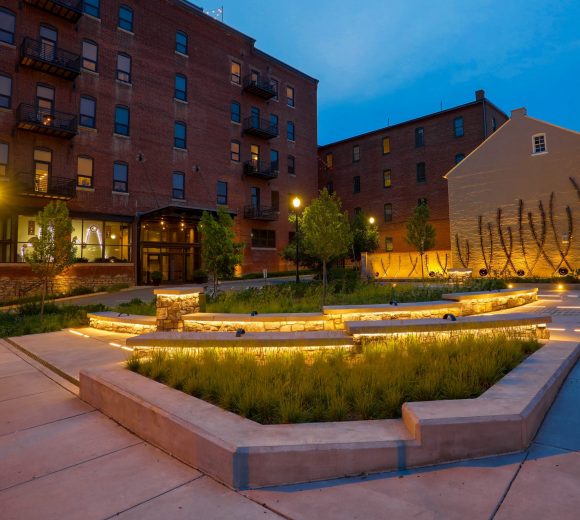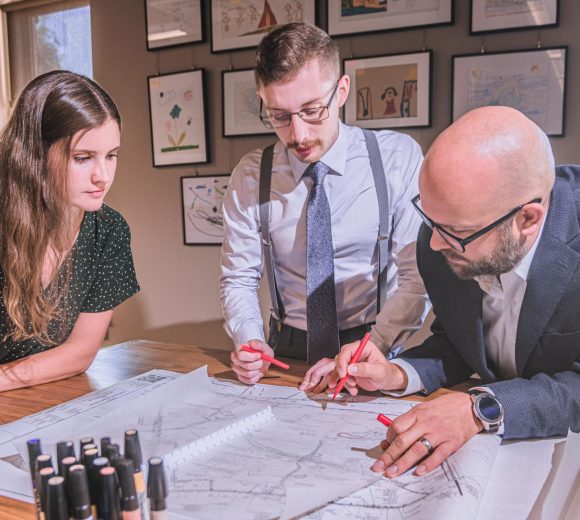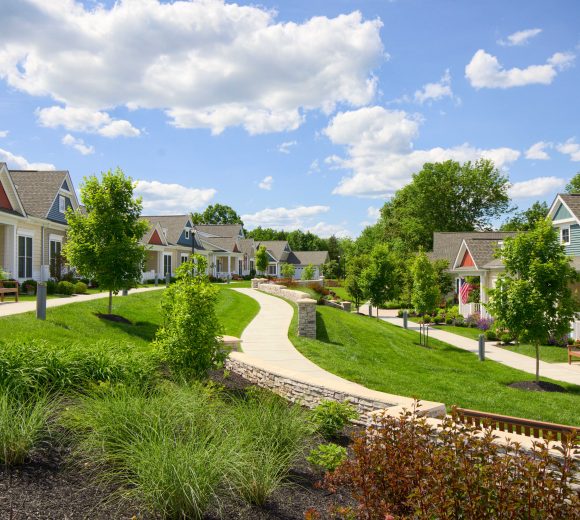RGS featured in CPBJ: As retail evolves, RGS Associates Inc. architect sees growing cost, complexity
Landscape architect Mark Hackenburg, is a principal at RGS Associates. The Lancaster-based firm has been handling land development, site planning, landscape architect and civil engineering at the the Shoppes at Belmont, a mixed-used development under construction in Manheim Township. – (Photo /Amy Spangler)
By Jason Scott, September 8, 2017 at 3:00 AM
Lancaster-based RGS Associates Inc. is helping to shape many of the big development projects in Central Pennsylvania.
The firm’s recent efforts range from studying the redevelopment potential of the former Harrisburg State Hospital grounds and planning for the future Hershey West End development to working on mixed-use urban redevelopment projects in Lancaster, expansions of senior-living campuses on the West Shore and large shopping centers in Manheim Township.
And demand for the civil engineering and land planning firm’s services isn’t slowing down, despite ongoing changes in the retail industry, including the shuttering of many brick-and-mortar stores by companies losing ground to e-commerce.
Mark Hackenburg, a principal at RGS, spoke with the Business Journal recently about development in the midstate and how commercial projects are evolving in the current retail environment.
RGS, which was founded in 1993, has nearly 40 people on staff and operates in a 12-county region surrounding Lancaster, as well as parts of northern Maryland and Delaware. The company worked on The Shoppes at Belmont, a sprawling mixed-use project, anchored by Whole Foods, that will open next year along Fruitville Pike in Lancaster County.
Q: How have regional clients responded to the churn within the retail sector and big names shedding stores or going out of business? Are plans for new projects evolving to reflect that reality?
A: We’ve identified some things going on in the retail industry, including the downsizing. You’re seeing folks like Target who are rethinking the size of their stores. I think that’s a reaction to online. You’re seeing a change in how technology and online buying has impacted the bricks and mortar. That lessens demand.
What I think is really one of the most significant drivers in the retail sector right now is location. The most significant projects we have going on are all about being in a highly desirable physical location. We’re also seeing a little movement away from traditional shopping centers. You’re seeing folks who are responding to the market desire for ease of accessibility, so we’re starting to see stores broken up and scattered more than the traditional model. That affects site design and aesthetics of a project. We’re seeing a lot more attention being paid to the aesthetics of a place.
You’re still working on big commercial tracts in Lancaster County, like The Shoppes at Belmont in Manheim Township, and elsewhere in the region. Why do you think those projects are able to move forward now? Is it primarily the location or something else about the tenant mix?
Market growth is one thing that’s happening. Belmont, for instance, we’re only seeing the tail end of what has been a 10-year process. When they bought that property, they bought it with the acknowledgment and recognition there was continued retail growth that was going to occur in the marketplace and that was a prime spot in the Lancaster market.
The plans really morphed over periods of time as retailers were attracted to that location. The early Target plans were much bigger than the footprint they are actually building.
The visibility is huge in the retail sector and that site offers significant visibility that retailers are attracted to.
We’re seeing a lot of demand in the restaurant and food space. It seems to be manifested by the fact that people are pressed for time. We’re mostly dual-income families busy with children, and the traditional sit-down meal at the family dinner table doesn’t really happen the way it used to anymore. It’s either the convenience of takeout or going out to a restaurant. There is a significant demand in the retail sector for restaurant space.
Lime Spring Square is another good example, even Donegal Square out in Rapho Township, where almost all that retail space is food.
We’re seeing that food is playing a very significant role in the design of retail spaces. Often times there are outdoor dining components in our projects. It’s being responsive to the lifestyle needs of the consumer. Traditional retail of the past was goods and services.
We hear a lot about today’s consumer and the desire for more “authentic experiences,” which is evident by social media, but we also know online shopping and convenience purchases driven by mobile technology and busy lifestyles are important. How do you design projects that check off all the boxes for tech-savvy consumers and create that sense of place to combat the Amazon effect? Does that give those new centers a better chance?
You’re seeing a lot more attention being paid to differentiate from other products. In many instances, it’s about maximizing visible sight lines to the frontages of various buildings that are being proposed. How do you create the greatest value for the retailers you’re trying to appeal to and attract? That can have everything to do with visibility to the spaces that are created.
For example, how much outdoor space you have adjacent to the front of a building. There is a generally a higher return on investment because the developer can charge more for that space if he’s got a market willing to accept and absorb some of the cost. When you have a Belmont in a prime location, they knew that site was going to be able to respond to higher-end retailers and they could charge a little bit more for their space.
It takes not just the site guys, it’s the entire project team. It’s the commercial Realtors who have connections to the retailers who know what their needs and interests are, and it’s the developer who is trying to put it all together. You have the architectural influences and designers. It’s not one entity, that’s for sure.
As development has picked up, are you seeing more feasibility studies for future projects?
The market has recovered. Developers will tell you rents have not fully recovered. That is a byproduct of space becoming available because of the changing complexion of the retail market space. You can see it with grocery stores and stores realizing the goods and services environment is changing.
We’re seeing a lot of mixed-use stuff with residential tied to smaller retail opportunities.
Are more developers kicking the tires on concepts for long-anticipated projects?
We’re seeing things that had gone on hold during the downturn, maybe were in secondary markets and locations. We’re seeing some of that stuff being re-looked at. We’re seeing our convenience-store guys being really active right now. Some of it is because of (liquor licenses), but I think it’s a byproduct of a strong economy. They are looking for good opportunity sites. Sheetz, for instance, is heading into the Maryland market with a vengeance.
You see Triple Crown’s work with Senate Plaza (in East Pennsboro Township). They really seized this notion there are a lot of rooftops in that region and opportunity.
Let’s talk more about the land development process. Between municipal reviews and working through the state and federal permitting process, how long does it realistically take today to get projects from concept to land development and construction? Is it getting slower and more costly for developers to navigate the process?
I don’t think the municipal process has gotten better or worse. It is slower because of some of the other regulatory permits that projects are now required to obtain.
Nothing is getting easier. Nothing is getting cheaper. The regulatory environment has become more stringent, more costly and more complex to navigate. That does impact the timeframe that it takes to get approvals. I think it’s more a byproduct of the state and federal regulatory environment. You’re trying to do more with less staff at the state and federal levels and that is where I think the impact has been most significant.
What other types of projects or service areas are picking up for RGS? Are you looking to expand?
We’re seeing some increases in manufacturing and industrial. The post-construction services is a component we’re focused on, particularly as it pertains to stormwater management and stormwater facilities.
One of the other things that we’re seeing is a focus on health-oriented uses in a lot of our commercial centers. It’s that retail model of health care with urgent care and just the convenience of health care being provided as a part of retail complexes. We’re seeing dental providers and fitness.
They are all trying to capture market share. Part of how they capture referrals to doctors and within their own system, they are going to where people are. They are locating care facilities away from their big conglomerate campuses and trying to reach out into the community. It’s a cost-containment tool, but it’s also trying to capture market share.



